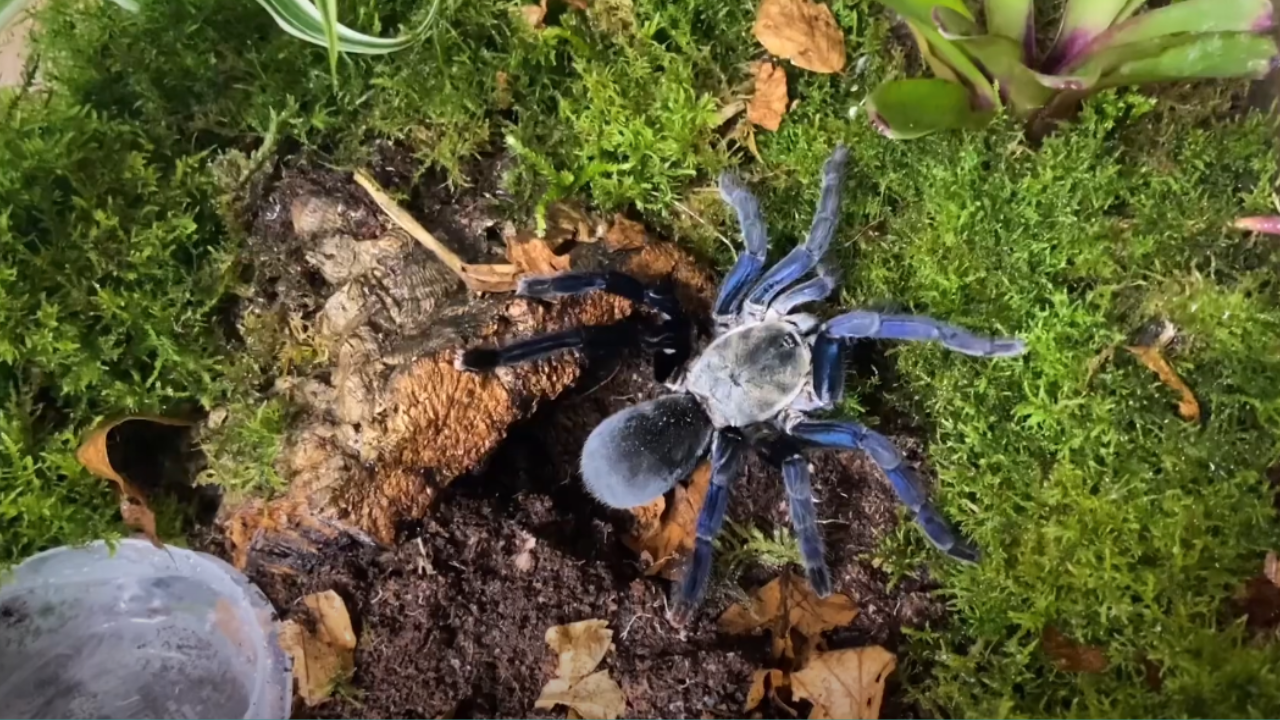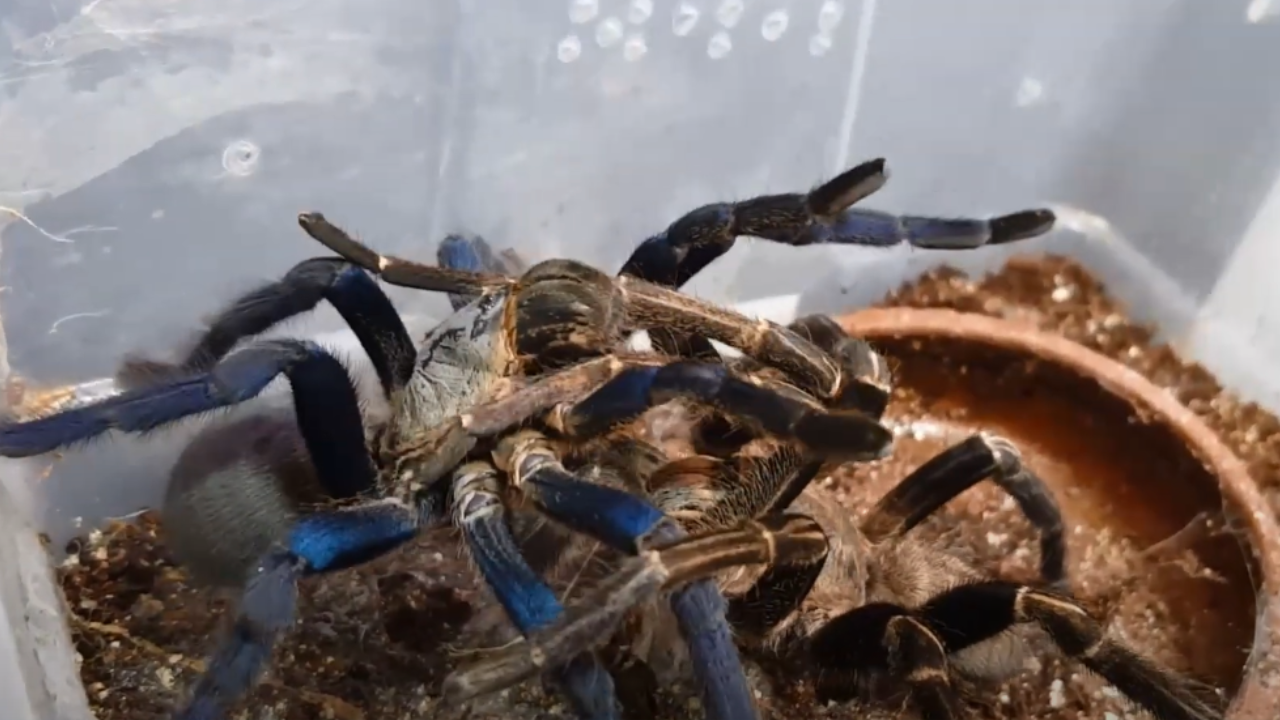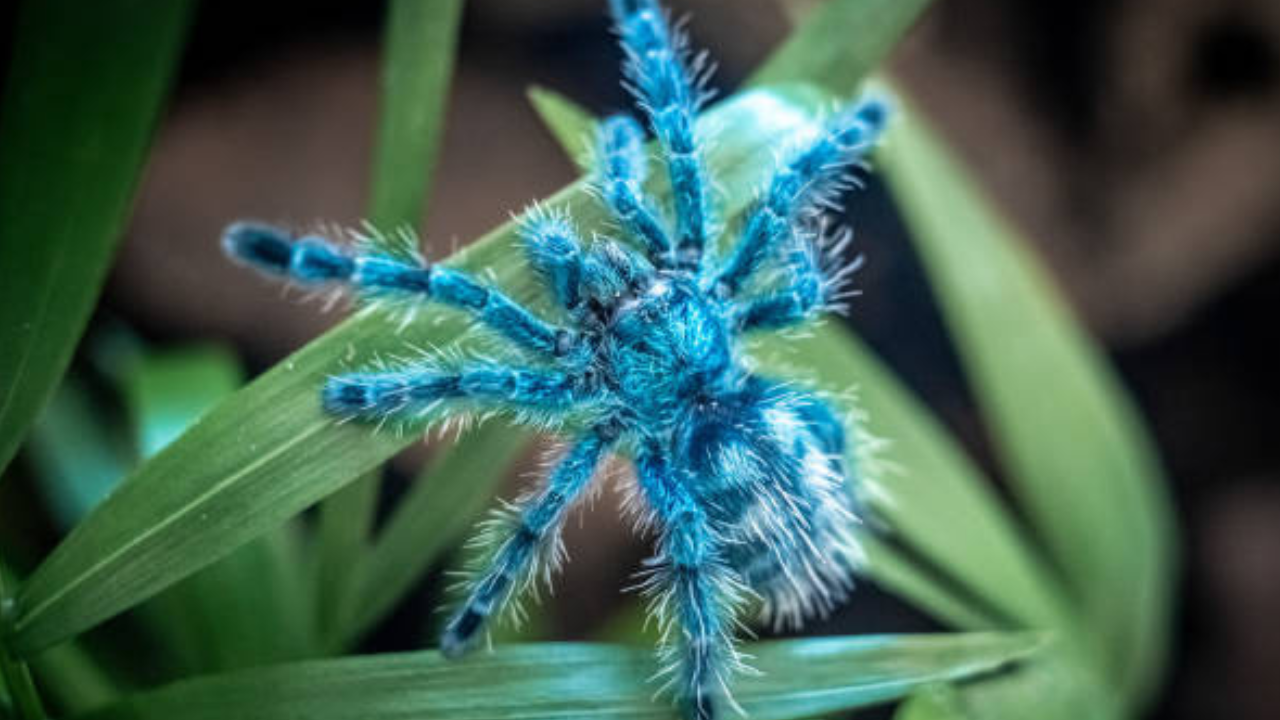Cobalt Blue Tarantula Guide by TopFlight Dubia Experts
Posted by TopFlight Dubia on Apr 4th 2024
The Cyriopagopus lividus (species of tarantula) is a popular pet, even though it is fast, defensive, and has strong venom. The speed and aggression of the Cobalt Blue tarantula make them a fascinating yet challenging species for keepers.
Many owners underestimate their need for deep burrows, specific humidity levels, and a hands-off approach. Without the proper care, stress and health issues can arise, making it challenging to handle.
This guide by TopFlight Dubia will provide expert tips on feeding, temperature, and many more so that you can safely and successfully care for this species.
Cobalt Blue Tarantula Overview
|
Species Name |
Cyriopagopus lividus |
|
Size |
Medium-sized, with a leg span of 13 cm (5.1 in) and body length of 9 cm (3.5 in). |
|
Lifespan |
Females live 15-18 years; males live 5-6 years. |
|
Ideal Temperature & Humidity |
Temperature: 77-85°F (25-30°C); Humidity: 70-80%. |
|
Natural Habitat |
Found in tropical rainforests of Southeast Asia; makes deep burrows. |
What is the Temperament of the Cobalt Blue Tarantula?
1. Defensive Nature
They are known as the defensive species and often tend to bite when they feel threatened.
2. Aggression
These tarantulas are aggressive in nature. Sometimes, they can be reactive if they feel their space is being invaded.
3. Speed and Agility
As an old species, they are known for their speed and agility, which makes them more challenging to care for.
How To Create Habitat for Cobalt Blue Tarantula

1. Enclosure Setup
Consider using a right terrarium. To allow burrowing, provide at least 5 inches of substrate at the front and 7 inches at the back. A sloped enclosure mimics their natural habitat. Also, add a piece of cork bark as a hide for the tarantula to burrow under.
2. Substrate
Use a mix of 50% coconut fiber and 50% potting compost to support burrow stability. Make sure the substrate is moist but not overly wet.
3. Temperature & Humidity
Keep a temperature of 24-26°C (75-79°F) in summer and 20°C (68°F) in winter. Also, the humidity levels should be maintained between 70-90%. Misting can help maintain moisture, but avoid overwatering.
4. Plants & Moss
You can use live plants like bromeliads and spider plants to help retain humidity. Moss helps lock in moisture and keeps the enclosure humid. Also, leaf litter should be placed to mimic the tarantula’s natural forest floor environment.
5. Water Source
Keep a water dish in the enclosure for drinking.
6. Maintenance
You can also add springtails as a cleanup crew to help with waste management. Make sure to check and adjust humidity levels regularly.
What Does the Cobalt Blue Tarantula Eat?
The Cobalt Blue tarantulas' diet includes centipedes, beetles, crickets, cockroaches, mealworms, and baby mice.
|
NOTE: Do not try to feed your pet when it is molting because the live food might harm your tarantula. |
Is the Cobalt Blue Tarantula Good for Beginners?
No, the tarantulas are recommended for beginners. They are known for their feisty and defensive nature. They may exhibit aggressive behaviors such as rearing up, flicking urticating hairs, or biting when threatened. Also, due to their speed, handling this species of tarantula might be challenging.
If you are wondering about keeping them as pets, then you need to take preventive measures.
How to Breed Cobalt Blue Tarantulas in Captivity?

Breeding cobalt blue tarantulas (Cyriopagopus lividus) in captivity is challenging due to their aggressive behaviour. While some owners tend to breed this species of tarantulas with proper care and precaution. Here is a step-by-step guide on how to increase the chances of successful breeding.
1. Pick the Healthy Specimens
- Choose a sexually mature male and female,
- Ensure both are healthy, well-fed, and not recently molted.
2. Set Up the Enclosure
- Keep the male and female in individual enclosures before introducing them.
- Maintain the desired temperature and humidity.
- Provide a deep substrate and a burrow or hide for the female.
3. Pre-Breeding Condition
- Feed the female well to prevent aggression.
- Increase humidity slightly to simulate the rainy season.
4. Introduce the Male
- Place the male in the female’s enclosure carefully, preferably near the entrance of her burrow.
- Watch for drumming behavior (tapping of front legs or pedipalps) from both spiders that indicate receptivity.
- If the female is receptive, it will allow the male to approach. The male will try to lift her to insert sperm using his pedipalps.
5. Post Mating Handling
If the mating is successful, immediately remove the male to prevent him from being attacked and eaten.
6. Egg Sac Production & Incubation
- The female may produce an egg sac in 4-6 weeks if fertilized.
- Do not disturb the female once the sac is laid.
- After 30-40 days, remove the sac and incubate it in a separate container at 80% humidity and the incubation temperature typically between 70-75°F (cool side) and 80-85°F (warm side).
- Egg hatch into spiderlings in a few months.
7. Raise Spiderlings
- Once spiderlings come, separate them into small containers to prevent cannibalism.
- Feed them pinhead crickets or fruit flies until they grow larger.
Conclusion

Blue Cobalt tarantula is a popular as well challenging pet to take care of. However, with the right tips and strategies, you can keep them as a pet. You can create an ideal habitat setup for them using the right enclosure, substrate, temperature and humidity conditions, and many more. Also, remember to take precautions while breeding the two tarantulas.

